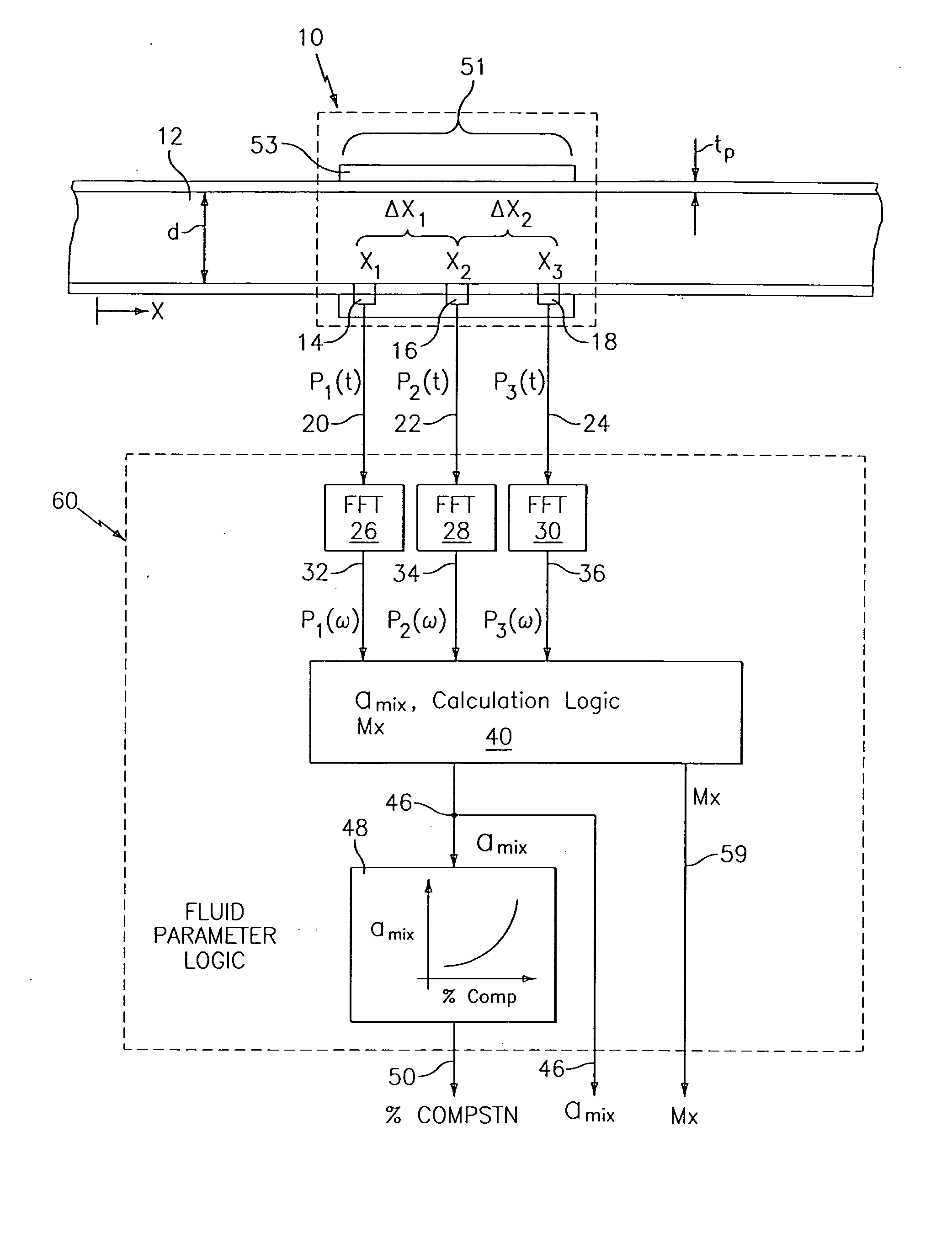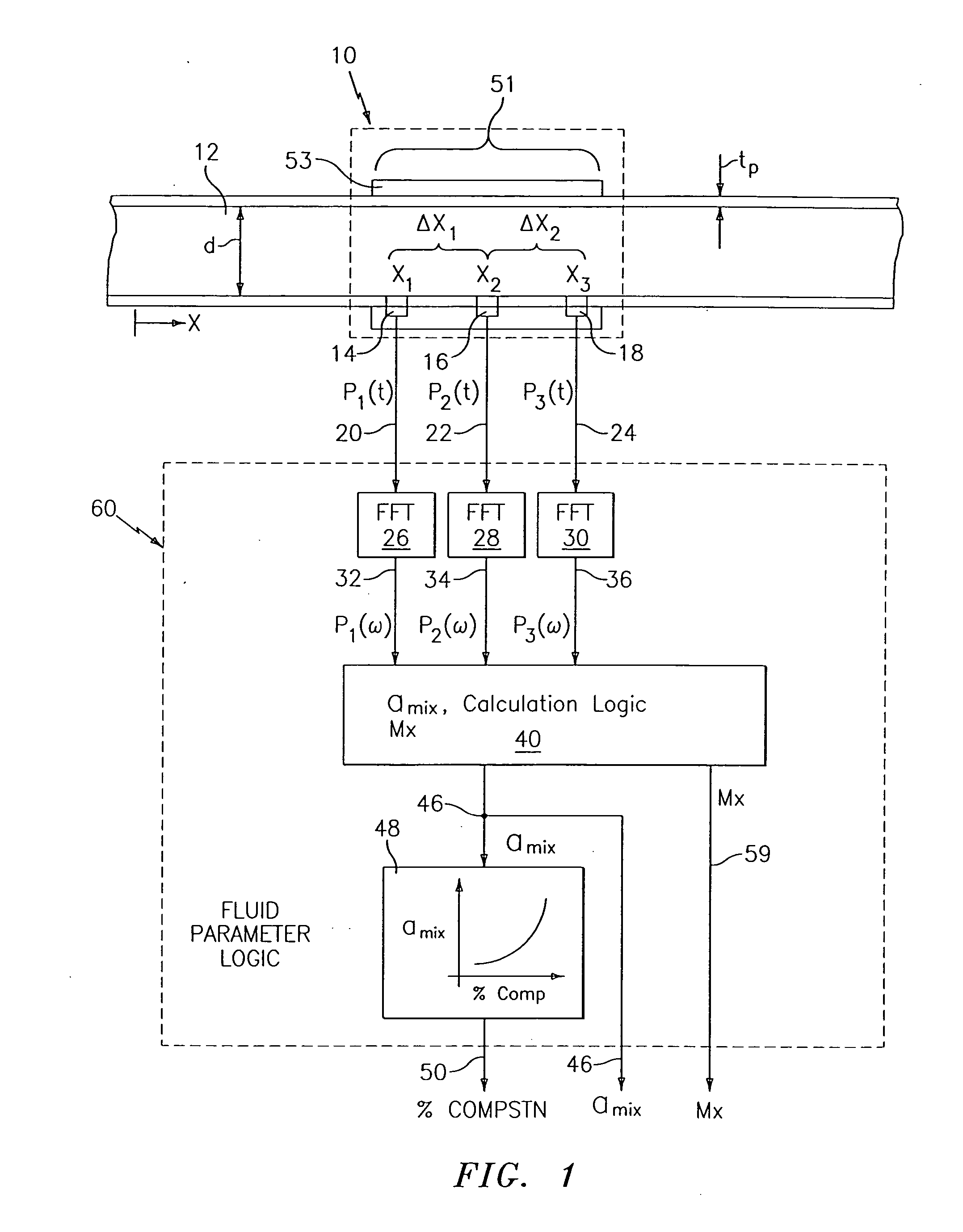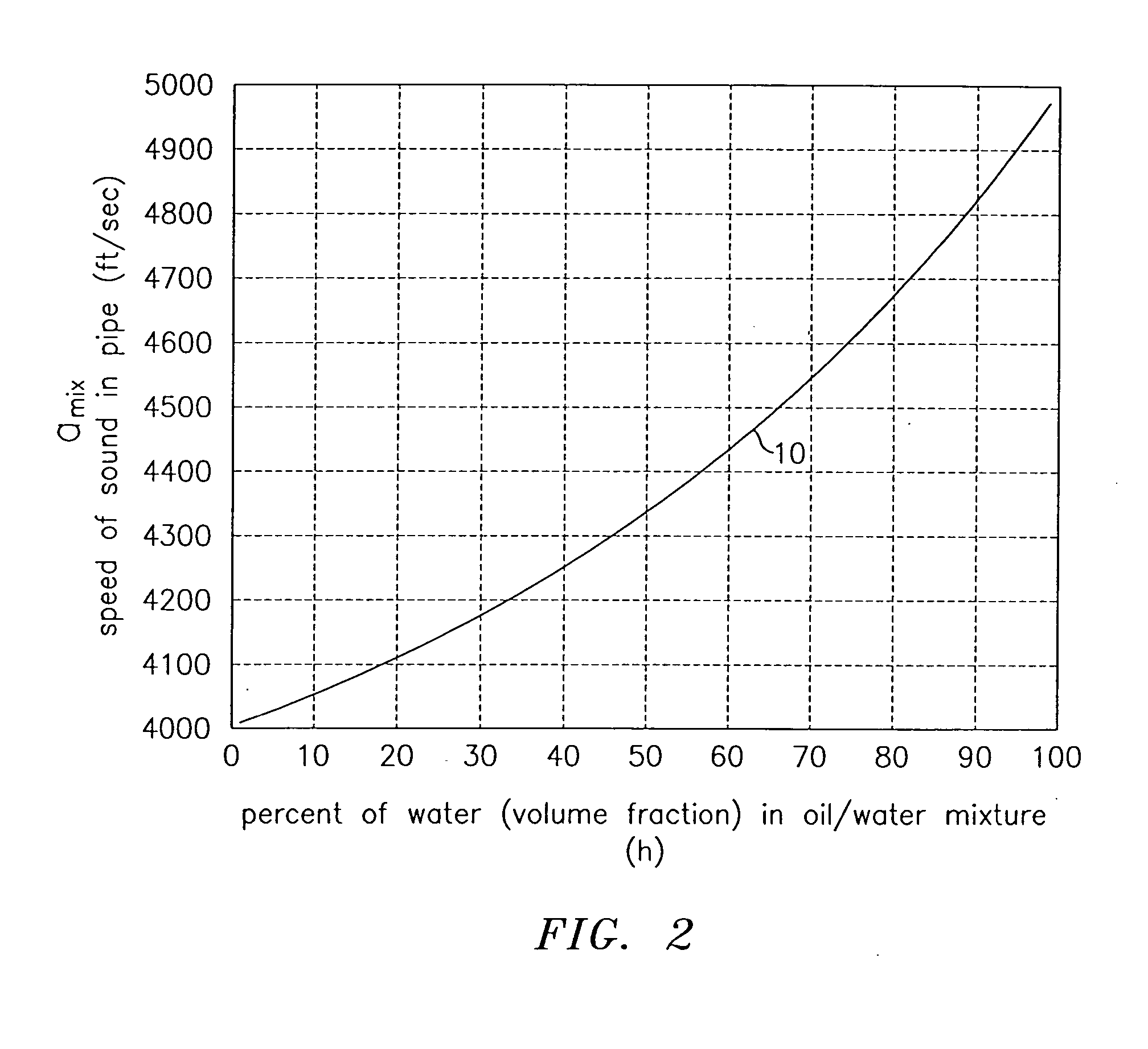Fluid parameter measurement for industrial sensing applications using acoustic pressures
- Summary
- Abstract
- Description
- Claims
- Application Information
AI Technical Summary
Benefits of technology
Problems solved by technology
Method used
Image
Examples
Embodiment Construction
Referring to FIG. 1, a pipe (or conduit) 12 has three acoustic pressure sensors 14,16,18, located at three locations x1,x2,x3 along the pipe 12. The pressure may be measured through holes in the pipe 12 ported to external pressure sensors or by other techniques discussed hereinafter. The pressure sensors 14,16,18 provide pressure time-varying signals P1(t),P2(t),P3(t) on lines 20,22,24, to known Fast Fourier Transform (FFT) logics 26,28,30, respectively. The FFT logics 26,28,30 calculate the Fourier transform of the time-based input signals P1(t),P2(t), P3(t) and provide complex frequency domain (or frequency based) signals P1(ω),P2(ω),P3(ω) on lines 32,34,36 indicative of the frequency content of the input signals. Instead of FFT's, any other technique for obtaining the frequency domain characteristics of the signals P1(t),P2(t),P3(t), may be used. For example, the cross-spectral density and the power spectral density may be used to form a frequency domain transfer functions (or f...
PUM
 Login to View More
Login to View More Abstract
Description
Claims
Application Information
 Login to View More
Login to View More - R&D
- Intellectual Property
- Life Sciences
- Materials
- Tech Scout
- Unparalleled Data Quality
- Higher Quality Content
- 60% Fewer Hallucinations
Browse by: Latest US Patents, China's latest patents, Technical Efficacy Thesaurus, Application Domain, Technology Topic, Popular Technical Reports.
© 2025 PatSnap. All rights reserved.Legal|Privacy policy|Modern Slavery Act Transparency Statement|Sitemap|About US| Contact US: help@patsnap.com



